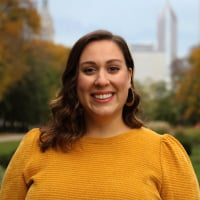Grant Review Practices



I'm looking for advice from an organization that has experienced growth and had to adapt their grant review process. We are small, but growing. We now regularly receive 50+ grant applications for each cycle and our current process is an "everyone is involved in everything" approach. All board members evaluate the applications (in GLM), staff organizes the results so we have a first draft of a prioritized list, and then we meet (virtually) to review the list and make funding decisions. We add in grantee interviews if needed. It's a process where everyone reviews and has a say in everything, but as we grow, we need a more sophisticated process that spreads out the work but still leads to the board feeling good about the decisions we make.
Anyone else been on this journey and have advice on how to structure grant reviews as an organization grows? Thanks!
Comments
-
@AbbeyCameron this almost fits the description of our foundational review process to a tee. I've found it useful to create a checklist of due diligence items that need to be reviewed to avoid missing any crucial steps (i.e. checking their info on Guidestar for compliance, missing uploaded documents/follow ups, if they have met with us for an interview etc.). The checklist has also been useful to keep track of other data: if they are a returning/new applicant, geographic location of the nonprofit etc. so that we can create a dashboard to provide an overview of grants for each cycle which then also helps us comparatively review at the end of the year what we accomplished.
6 -
Hi @AbbeyCameron,
For our larger grant cycles that have around 50 proposals, we break our grant committee down into sub-committees. We usually have different categories with our RFP so try to make our sub-committees match those different categories as much as possible. For our capacity building grant cycle, we had a sub-committee focused on leadership, one focused on technology, and one focused on projects like consulting.
Reviewers only have to read around 17 proposals that way. Each sub-committee has a deliberation meeting and decides on their funding decisions, then we have an all-committee meeting where each sub-committee puts forward their recommendations to the whole group. As long as their are no major concerns, the whole group approves the projects for funding.
It has been working really well the last two years and makes the committee meetings easier, though you have to have more meetings.
Best,
Garrett
6 -
Hi @AbbeyCameron!
This is a great question. I don't know what your grant cycles or programs look like, but I did want to share what we've been doing at Triangle Community Foundation with great success.
We have five grant cycles for discretionary dollars (one for each impact area) every year or two and each has it's own committee. These committees do NOT involve our Board members or staff. In the past, these committees were made up of community members that worked in that field, were a very involved donor that wanted to volunteer in this area, nonprofit professionals who were not eligible for this program, etc.
We have recently made a shift with a few of our grant programs to a participatory grantmaking model. For these programs, we have invited the previous year's grantees to be the reviewers for the grants. There is a lot of research on the effectiveness of participatory grantmaking, and we are planning to implement it across our programs. We have also started to include high school students on our education/youth grant committees and their perspective is invaluable!
Finally, we have also budgeted into each program area a line item for paying our committee members. We use an internal process in GLM to get committee members to sign their conflict of interest forms and in that form we ask if they would like a stipend. For those working at nonprofits (in the case of participatory grantmaking) we also ask if they want it personally or to go to their organization. Many people accept it, but several do not, especially those who work for organizations who allow/offer volunteer time or flexibility to do this work.
A few different ideas for you to consider here--I'm happy to talk more or to connect you with one of my team members who have more experience implementing the participatory grantmaking committees!
7 -
I want to thank you, on behalf of our Community Programs department, for your insightful idea. One of our programs received way too many requests for each person to review. The idea of splitting them up by focus or program area is a great one. We will likely implement the plan for ours.
4 -
Hi! This is such a great question!
We typically receive 100+ applications each grant cycle; however, they are split by locality so each application receives between 5-55 each cycle. We have 1-2 staff members do due diligence on the applications (checking documents, IRS status, etc.) before they are reviewed. This process usually takes 1 - 2 weeks depending on what other projects are going on.
Currently, we have committees of volunteer reviewers that score the applications on GLM and meet to discuss them. They make recommendations which are then approved by our board.
If an application receives more than 30 or so applications, we may split them between committee members. To do this, we randomly assign reviewers so that each application has at least three reviews.
Loving all the ideas in this thread!
4









